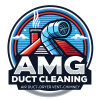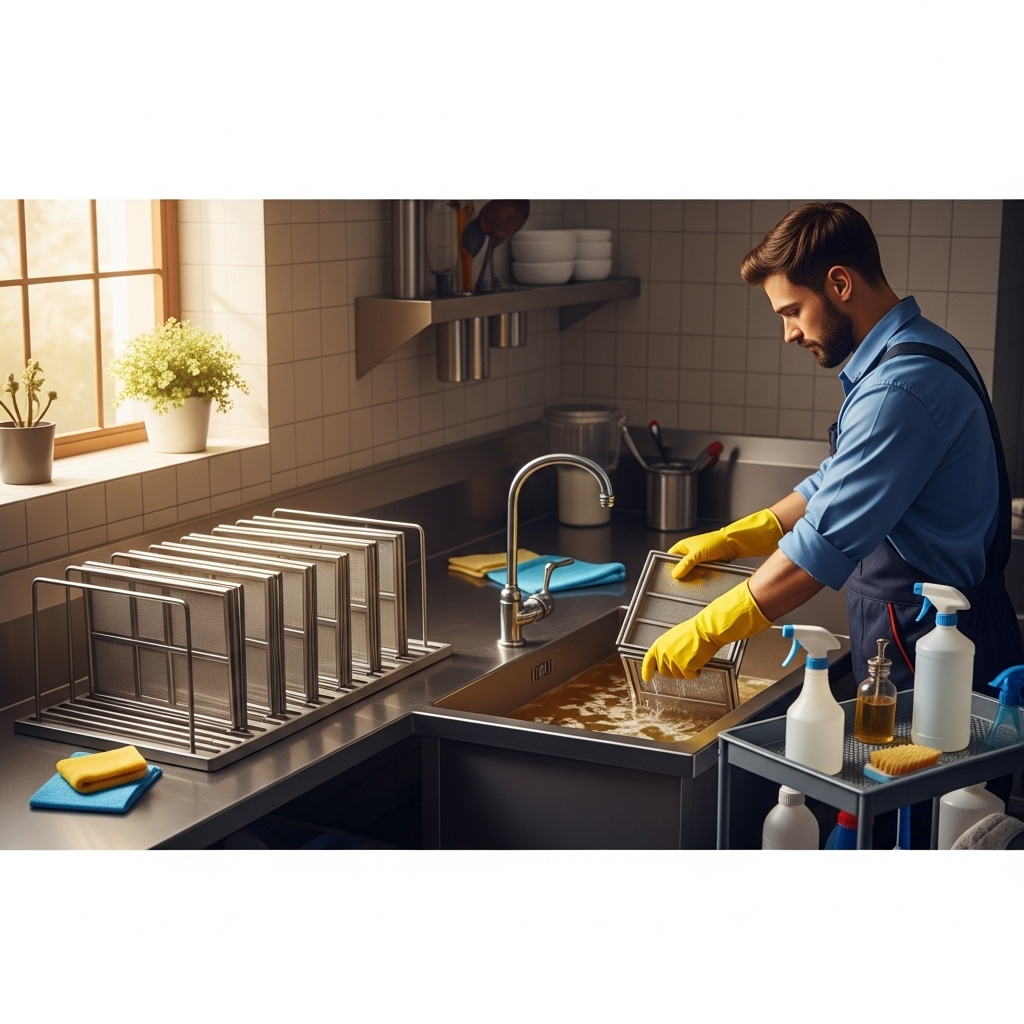Kitchen Exhaust Hood Cleaning and Maintenance Tips for Somerville, NJ
Restaurants and commercial kitchens in Somerville depend on effective ventilation to control heat, smoke, and grease. Over time, residue accumulates in hoods, filters, ducts, and rooftop fans, increasing fire risk and diminishing capture efficiency. A strong maintenance program blends staff routines with scheduled professional service to keep systems safe, compliant, and efficient. If you are building or refining your plan, start by securing a dependable partner for kitchen exhaust hood cleaning who understands local buildings, roof access challenges, and inspection expectations.
Good maintenance is not just about passing inspections; it supports day-to-day comfort and performance. Cleaner systems improve airflow, stabilize kitchen temperatures, and reduce odors that might otherwise drift into dining spaces. The following tips help you standardize care, train staff, and decide when a professional deep clean is due.
Establish a Clear Cleaning Cadence
Match your schedule to cooking volume and methods. High-grease operations with fryers, charbroilers, or woks often need monthly or quarterly professional cleaning. Moderate kitchens may follow quarterly to semiannual timelines, and light-duty operations can be semiannual or annual. Somerville’s seasonal swings, holiday peaks, and special events can add production spikes; use a simple log to capture these surges and adjust intervals accordingly. Your goal is to clean before grease accumulation reaches hazardous levels.
Between professional visits, commit to routine filter care. Soak baffle filters in an appropriate degreaser and rinse thoroughly, ensuring they are fully dry before reinstallation. Consistent filter maintenance slows downstream buildup, reduces smoke during peak service, and keeps airflow balanced.
Protect Equipment During Cleaning
When professionals arrive, they will protect your cookline, prep areas, and floors with coverings and containment. Train your team to support this process by clearing pathways, shutting down equipment on time, and securing sensitive items before service begins. Good preparation reduces cleanup time, prevents accidental contamination, and helps technicians finish on schedule so you can open the next day without delays.
On rooftops, safe access and hinge kits for fans reduce risk and speed service. If your building has restricted access, coordinate early with management for keys and safety procedures. Ensure that any rooftop grease containment is maintained to prevent overflow and roof damage.
Recognize Early Warning Signs
Teach supervisors and leads to watch for early indicators of airflow problems. Smoke lingering at the hood edge, strong cooking odors after closing, and visible residue on nearby walls and ceilings suggest grease is restricting capture. Loud or vibrating fans may indicate belt wear or debris contact. When you spot these issues, schedule professional service ahead of the planned interval to restore performance.
Some kitchens notice issues during seasonal menu changes—adding a charbroiler, for example, increases grease output dramatically. Update your cleaning cadence accordingly and inform your provider so they can reassess access panels, hinge kits, and other hardware that support thorough cleaning.
Detail Matters: Don’t Stop at the Surface
Shiny stainless steel can give a false sense of security. True safety requires degreasing the hood interior, plenum, accessible ducts, and rooftop fans. Insist on thorough service that removes flammable residue where it collects most intensely. Ask for photo documentation and a walkthrough that explains any areas needing additional access or hardware upgrades. These details convince inspectors that your program is comprehensive.
Polishing after degreasing protects stainless surfaces and helps your team see new residue quickly, making routine wipe-downs more effective. Include final polishing in your checklist so line cooks inherit a clean, easy-to-maintain surface at the start of the next shift.
Train for Consistency
Turnover is a reality in hospitality, so brief, recurring training keeps routines consistent. Cover filter handling, safe degreaser use, and end-of-night wipe-downs. Assign a point person per shift to verify that filters are reinstalled properly and that visible surfaces are clean. When leadership models these behaviors, teams are more likely to follow them without reminders.
Encourage staff to report issues promptly. A short note about reduced capture or a new fan noise can prevent bigger problems later. Reward early reporting and document corrective actions in a simple log that management reviews weekly.
Coordinate with Building Management
In multi-tenant buildings or older properties, roof access and shared shafts may require additional coordination. Schedule service after closing, secure elevator access if needed, and share safety requirements with your provider. Keep neighbors informed if cleaning could affect shared spaces. Clear logistics translate to faster service, better results, and fewer disruptions.
Communicate any building rules about water disposal or noise restrictions. Reputable providers use containment and disposal practices that protect the environment and roofing materials. Advance planning prevents conflicts and demonstrates professionalism to landlords and inspectors.
Documentation That Stands Up to Inspection
Maintain a binder or digital folder with service reports, before-and-after photos, and copies of stickers placed at the hood and rooftop fan. Add your internal filter-cleaning log and notes on observed airflow issues or odors. Inspectors appreciate organized records that prove you are managing risk actively, not reactively. When deficiencies are found—such as missing access panels or worn fan belts—address them promptly and file proof of correction.
Consider a recurring calendar reminder for service intervals and internal tasks. Automated reminders help teams remember filter soaks and end-of-shift wipe-downs during busy periods, keeping routines steady even as staff schedules change.
Hardware Upgrades that Pay Off
Access panels along horizontal duct runs and hinge kits for rooftop fans improve safety and reduce labor time during each service. Proper seals and gaskets prevent leaks during rinsing, protecting ceilings and equipment. If your filters are warped or dented, replacement improves airflow and reduces bypass where grease can travel deeper into the system.
Grease containment on the roof protects surfaces and prevents environmental release. Regularly check trays or cups and ensure they are reinstalled correctly after cleaning. A little attention between visits prevents rooftop messes and helps keep neighbors and landlords satisfied.
Seasonal Adjustments in Somerville
Somerville’s winters bring cold that affects rinse water handling and rooftop access. Choose providers who plan for containment and safety in low temperatures. Summer increases volume for many restaurants; patio service and longer hours can drive grease production higher. Monitor your internal log for signs that frequency should be increased temporarily to keep performance and safety high during peak seasons.
If your concept hosts special events or catering operations, coordinate additional cleaning afterward. Short bursts of high production can push systems past safe limits faster than expected.
Frequently Asked Questions
Q: How do I determine the right cleaning frequency? A: Base it on cooking volume and methods, then validate through grease observations and inspection feedback. Adjust seasonally or after menu changes that increase grease output.
Q: Can my team handle filter cleaning entirely? A: Yes, with training and the right tools. Ensure filters dry completely before reinstallation, and log each cleaning to maintain consistency across shifts.
Q: What should a professional service include? A: Degreasing and rinsing of hood interiors, plenums, accessible ducts, and rooftop fans, followed by detailing and documentation with photos and updated stickers.
Q: How do I prepare for overnight cleaning? A: Shut down cooking equipment on time, clear paths for hoses, secure valuables, and inform staff about start and end times. Arrange roof access with management if necessary.
Q: What are signs I need to call for service sooner? A: Smoke leaving the hood edge, strong odors after close, sticky residue near the cookline, and noisy or vibrating fans indicate restricted airflow and grease accumulation.
Q: Are there environmental concerns? A: Responsible providers use containment and proper disposal to prevent drains or roofing from being contaminated. Ask about their reclamation practices and any building rules they must follow.
Build a Culture of Ventilation Care
The most reliable kitchens treat ventilation maintenance as a daily habit, not an occasional chore. With consistent filter routines, responsive scheduling, and clear documentation, you reduce fire risk, protect staff comfort, and improve equipment performance. When your team knows the plan and sees leadership prioritize it, the habits stick.
If you are updating your program, invite your provider to conduct a walkthrough and recommend cadence, hardware improvements, and training topics tailored to your layout and menu. Clear roles and routines result in fewer surprises and smoother inspections.
Book Trusted Help in Somerville
Strong ventilation keeps your kitchen safe, efficient, and welcoming for staff and guests alike. Reinforce your maintenance routines with expert deep cleaning that addresses hoods, ducts, and rooftop fans thoroughly. When you are ready to strengthen safety, airflow, and compliance, schedule professional kitchen exhaust hood cleaning services and keep your operation performing at its best.

